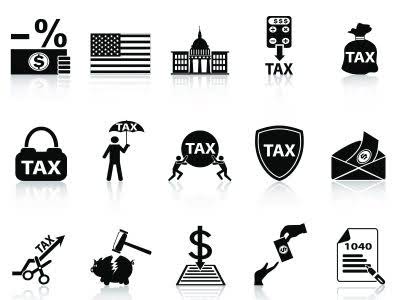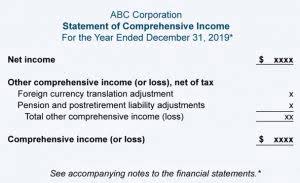
The goal is to have their subconscious take over and lead them to the right decision, similar to the intuitive decision making model. This is when you take all of the different solutions you’ve come up with and analyze how they would address your initial problem. Your team begins identifying the pros and cons of each option, and eliminating alternatives from those choices. You are looking at a total decision time of 15-min (in https://www.bookstime.com/ the interview) vs weeks or months in real-life. Effective decision making in organizations hinges on clear processes and informed frameworks that guide every level, from product managers to company leaders. By systematically exploring decision paths and potential outcomes, decision trees facilitate structured decision analysis, enabling decision-makers to make informed choices that maximize expected value and minimize risk.

Steps in the Decision-Making Process
Choosing the right model depends on the level of your decision-making skills, the amount of time you have, the nature of the decision, and your overall decision-making strategy. The Vroom-Yetton decision-making model was specifically designed for collaborative decision-making and is best employed when you involve multiple team members in the decision-making process. In fact, one of the main objectives of this model is to determine how much weight should be given to the input from a leader’s subordinates. The Vroom-Yetton decision-making model presents seven « yes or no » questions for a decision-maker to answer followed by five decision-making styles for them to choose from. It’s the most complex decision-making model on our list, requiring decision-makers to utilize a decision tree to arrive at the right decision-making style based on their answers to the model’s questions.
- Machine learning models can continuously learn and improve from new data, enhancing the accuracy and efficiency of decision-making processes over time.
- If you wish to prove it for yourself, feel free to open up your casebooks and try to map some of the practice case questions to the broad statements above.
- Following a logical procedure like the one outlined here and being aware of common challenges can help ensure both thoughtful decision making and positive results.
- Again, this decision-making model is best suited for experts and business leaders.
- That being said, despite the medical-scientific development, being accurate in the twenty-first century has become very challenging.
- This comprehensive guide aims to shed light on decision-making frameworks, their importance, different types, implementation steps, overcoming challenges, and the role of technology in enhancing decision-making processes.
- Decisions vary from simple to complex and can be categorized as operational, tactical, or strategic.
Multi-Criteria Analysis

This overwhelming amount of information may cause cognitive discomfort, increasing our trend to a heuristic confirmation, resulting in inaccurate predictions [10]. In a recent systematic review, clinicians more often underestimated rather than overestimated harm, while overestimated rather than underestimated benefits [11]. More than 100 biases and heuristics affecting clinical decision-making have been described [12]. All this noise, heuristics and cognitive bias may contribute to an approach excessively focused on curative or life-prolonging treatment for seriously ill patients even in the last weeks of life [13]. Base rate neglect is possibly the most relevant heuristic threatining accurate predicitons [14]. It happens when details of the narrative lead to making inferences that violate norms of probabilistic reasoning.

What is Critical Thinking?

Decision-making frameworks, such as the Cynefin framework and the Eisenhower Matrix, offer structured approaches to tackle complex decisions. Critical elements in decision making include setting clear goals, understanding the importance of organizational values, and recognizing the role of leadership in steering the process. Understanding and implementing a decision-making framework can help organizations and individuals navigate through complex problems, optimize resource allocation, and achieve desired outcomes. Multi-vote methods enable stakeholders to allocate a certain number of votes among different options based on their preferences or priorities. During the evaluation process, it is beneficial to conduct scenario analysis to understand how each option may play out under different circumstances.
AI algorithms can sift through massive datasets at incredible speeds, identifying patterns and trends that may not be immediately apparent to human decision-makers. Machine learning models can continuously learn and improve from new data, enhancing the accuracy and efficiency of decision-making decision making framework processes over time. By leveraging AI and ML technologies, organizations can gain a competitive edge by making faster, more precise decisions based on complex data analysis. Before diving into the specifics, it is essential to grasp the concept of decision-making frameworks.
Making smart decisions about the decision-making process
- It often involves techniques such as brainstorming, consensus building, and group decision-making.
- In many cases, avoiding biases is also key to making an ethical decision since biases can sometimes cause you to mistreat certain people and their ideas.
- Choosing only one solution right off the bat might not be the right course of action.
- Nevertheless, the DMP based on this framework could be tested, to refute our hypothesis or not.
- This will help you learn from your experience, measure your progress, and identify areas for improvement.
Explore worst-case scenarios

Paired Comparison Analysis
- By incorporating input from various stakeholders, collaborative decision-making frameworks aim to leverage the collective intelligence of a group.
- This requires an understanding attitude, an effort to tolerate listening to the suffering shared by the patient without trying immediately to fix it.
- They must champion its use, communicate its importance, and lead by example, demonstrating its application in real business scenarios.
- A decision-making framework is a systematic approach that provides a structured way of analyzing and evaluating different options before making a decision.
- Anytime you are faced with an important decision, it is essential not to let biases get in your way.